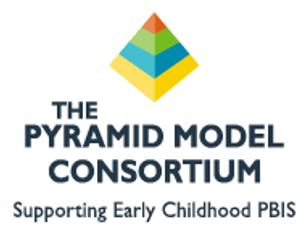
The Pyramid Model Consortium is a four-module training that focuses on promoting the social emotional development and school readiness of young children. Social emotional support materials and resources for each module will be provided at training.
- Module 1: Explores Social Emotional (SE) Development through the context of relationships.
- Module 2: Explores responsive routines, environments, and strategies to support SE Development in infants & toddlers.
- Module 3: Explores individualized interventions for infants & toddlers to determine the meaning of behavior & develop appropriate responses.
- Module 4: Explores leadership strategies including collaborative planning, program-wide planning, and professional development.
The training each day is from 8:30 am to 4:00 pm.
Lunch is on your own.
Cost is $25.00 for each Module of Training.
Each Module training may only be taken once.
Register below for the Pyramid Model Consortium Modules
Module 1: Explores Social Emotional (SE) Development through the context of relationships.
One day virtual training | Earn 6 VDOE Clock Hours | No prerequisite
Module 2: Explores responsive routines, environments, and strategies to support SE Development in infants & toddlers.
One day virtual training | Earn 6 VDOE Clock Hours | Prerequisite CSEFEL1
Module 3: Explores individualized interventions for infants & toddlers to determine the meaning of behavior & develop appropriate responses.
One day virtual training | Earn 6 VDOE Clock Hours | Prerequisite is CSEFEL Modules 1 & 2
This project was supported by the Virginia Department of Education (VDOE) Grant # 93.575, with funds made available to Virginia from the U.S. Department of Health and Human Services. Points of view or opinions contained within this document are those of the author and do not necessarily represent the official position or policies of VDOE or the U.S. Department of Health and Human Services.

